How to Cook Korean Rice on the Stove
Learn how to cook perfect Korean rice using the stovetop method. You can easily achieve soft, fluffy, and delicious short grain rice without a rice cooker by following these step-by-step instructions and tutorial video.
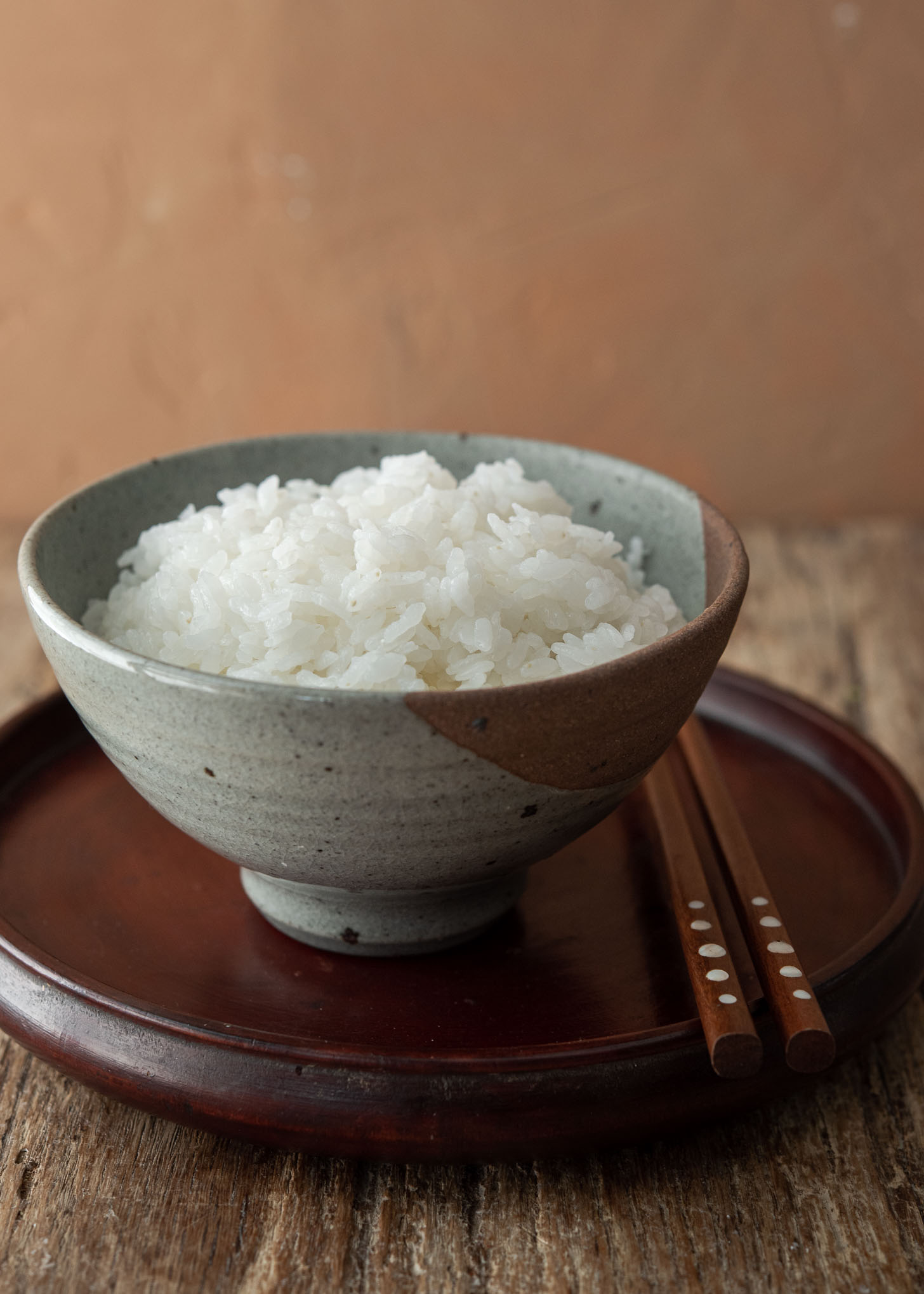
Rice is a staple food in Korean cuisine, and learning how to cook it properly is essential for anyone who wants to experience the full range of flavors and textures in Korean dishes.
Although rice cookers or pressure cookers are commonly used to make rice, generations of people have traditionally used the stove to cook rice.
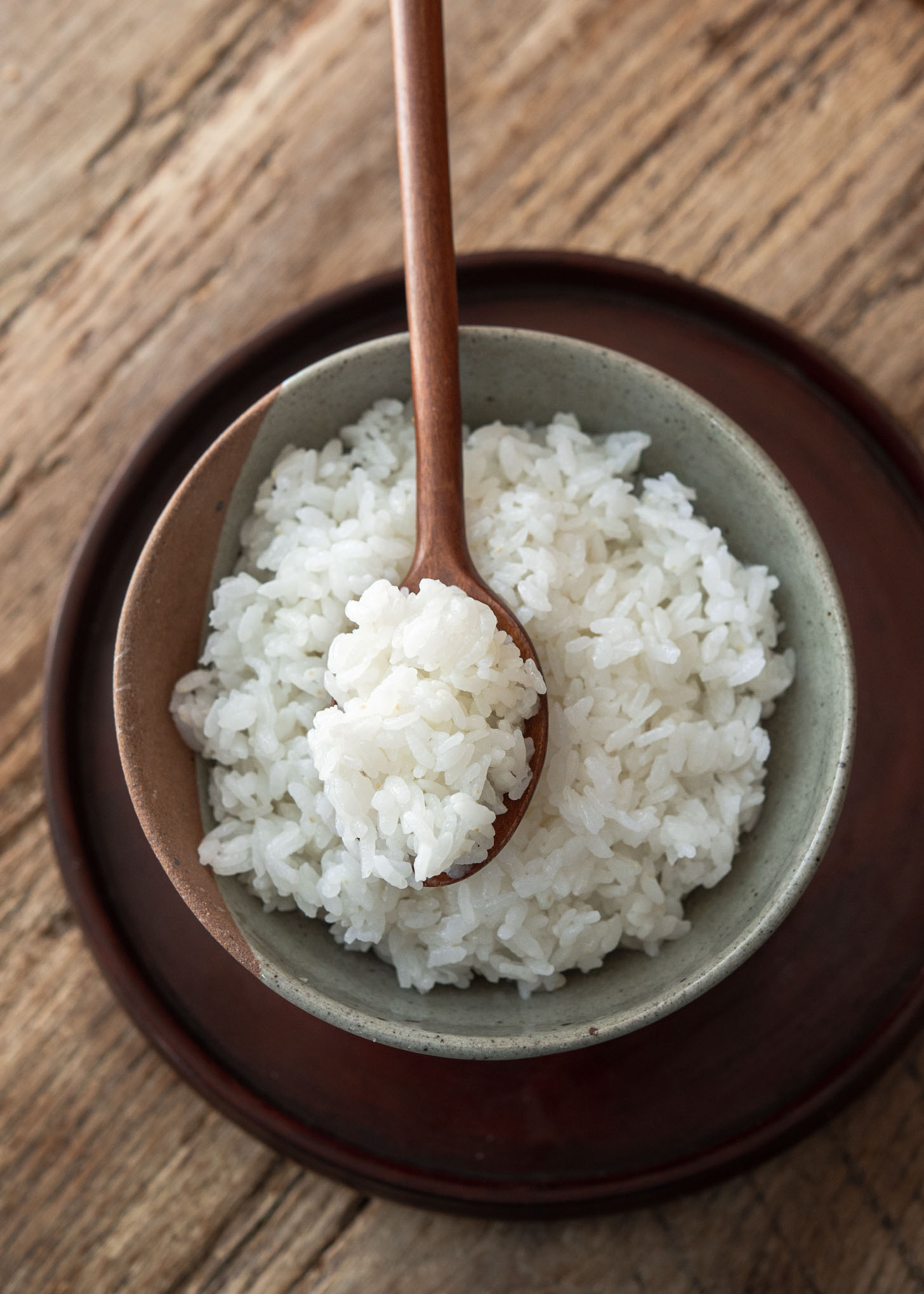
No rice cooker? No worries! In this post, I’ll guide you through the steps of cooking short grain rice on the stovetop, from preparing the rice to achieving the perfect texture and flavor.
Whether you’re new to Korean cooking or a seasoned pro, mastering this fundamental technique will elevate your dishes and bring you closer to the heart of Korean cuisine.
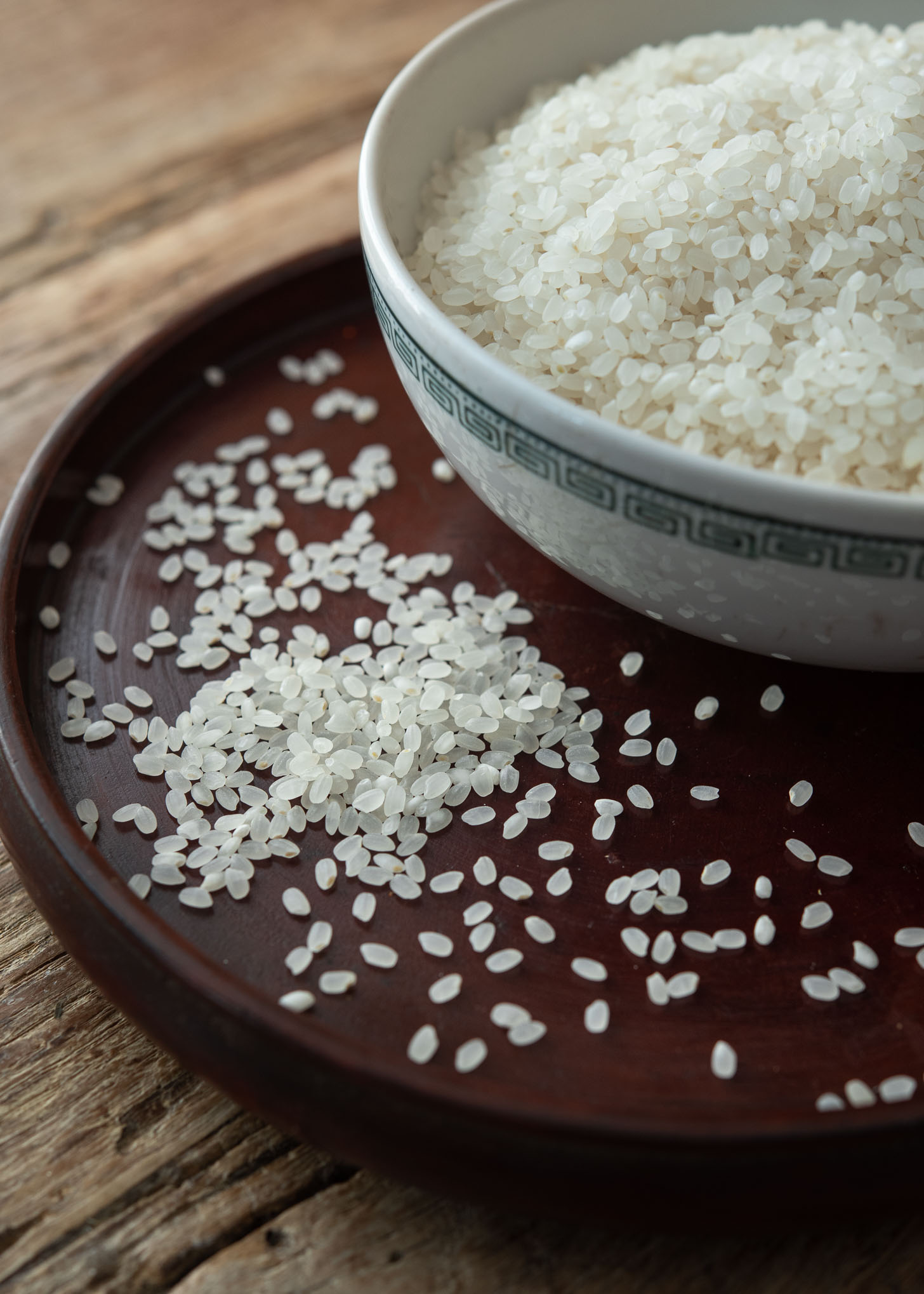
About Korean Short Grain Rice (Ssal)
In Korean cuisine, ‘ssal (쌀)’ refers to uncooked rice, while ‘bap (밥)’ refers to cooked rice. People refer to cooked multigrain rice as ‘japgok bap‘.
Although Koreans also consume other types of rice, such as brown or black rice, short grain white rice is the most popular and widely consumed variety. Check out my other post for more information about Korean rice.
Ssal is used in a variety of dishes, such as Kimbap (Korean sushi rolls), bibimbap (mixed rice bowl), juk (rice porridge), and bokkeumbap (fried rice), among others. Ssal is also used to make rice cakes, rice wine, and other traditional Korean foods.
Indigenous Rice in Korea
During the Japanese colonial period, Korean farmers preserved some indigenous rice seeds, but most were lost due to the Japanese policy of promoting Japanese rice (Japonica, sushi rice) as a replacement for indigenous rice.
However, in recent years, some regions in Korea have recognized the value and importance of indigenous rice and are making efforts to preserve and cultivate it.
Despite these efforts, the quantity of indigenous rice is still very limited, making it difficult to purchase. This is partly due to the low harvest volume and high production cost of indigenous rice, which can result in a higher price compared to regular rice.
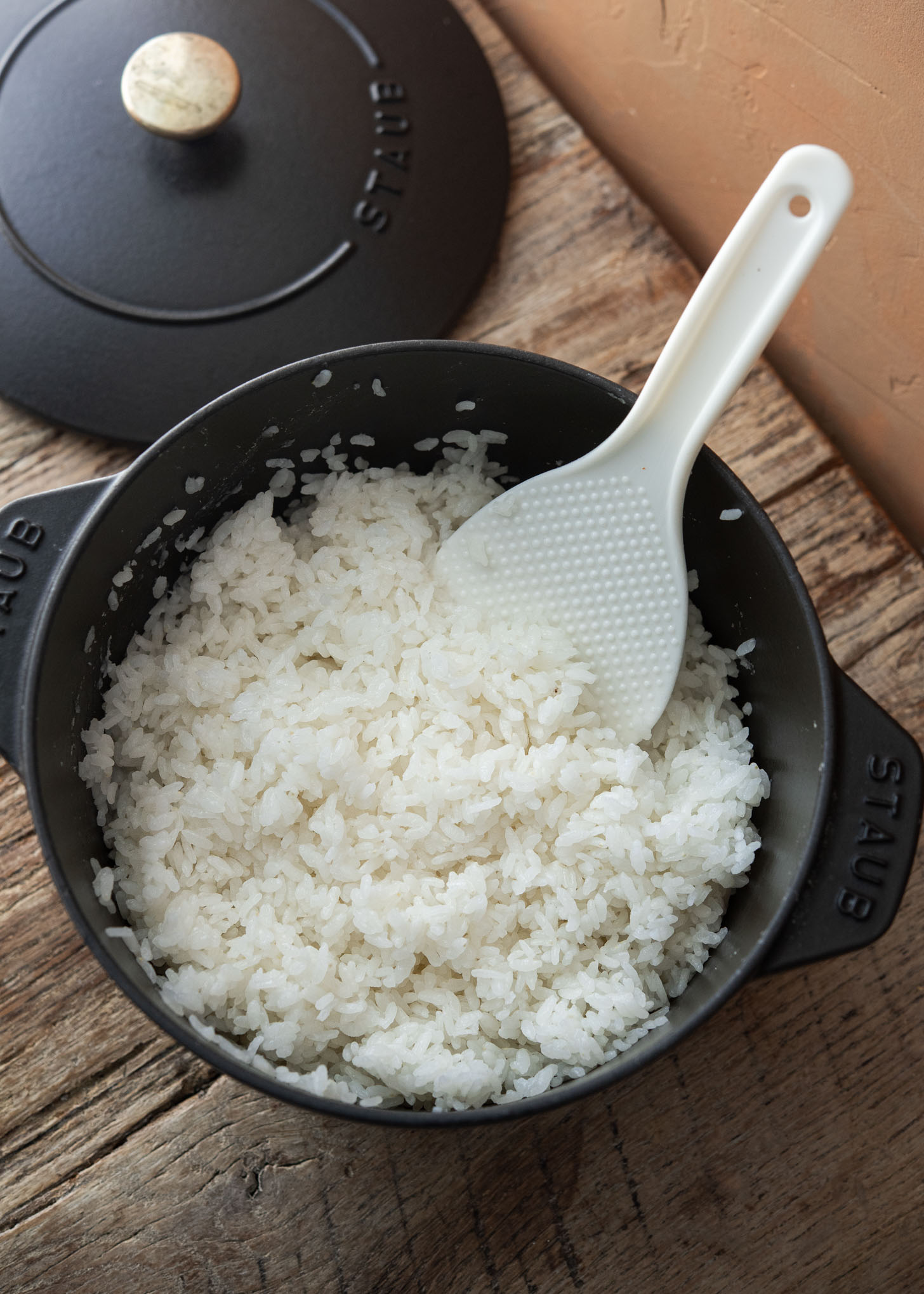
Short grain white rice (baekmi, 백미) is a popular variety of japonica rice in Korea. It has short, plump grains with high starch content, resulting in a sticky texture when cooked.
This sets it apart from long grain rice such as basmati or jasmine rice, which have a less sticky texture. The texture of short grain rice is softer and chewier compared to long grain rice, making it a favorite among Koreans.
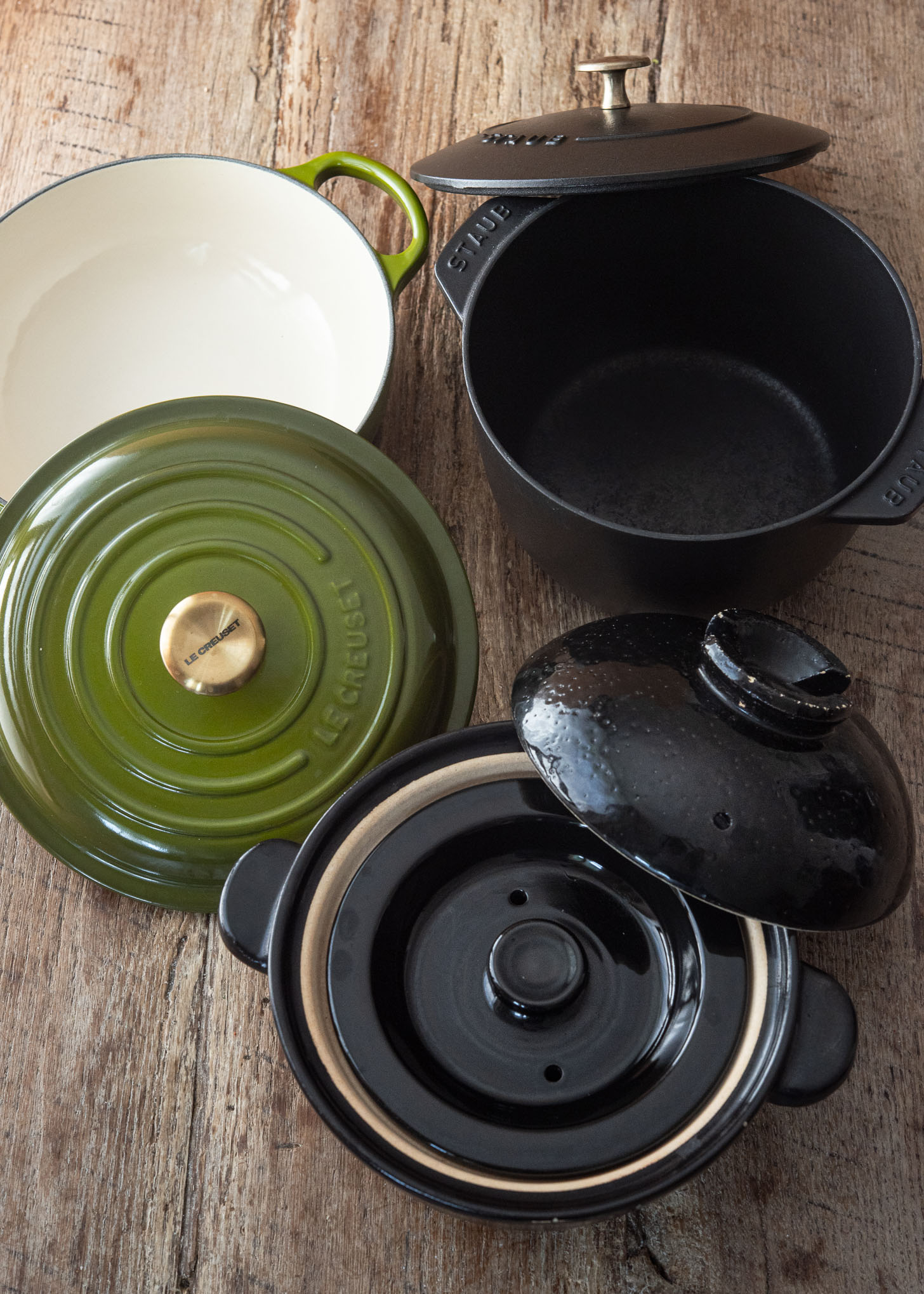
Choosing the Right Pot
For cooking short grain rice on the stove, the ideal pot to use is a heavy-bottomed pot with a tight-fitting lid. Traditionally, a cast iron or earthenware pot called a “ttukbaegi (뚝배기)” is used in Korea to cook rice. It allows for even heat distribution and retains moisture well.
People also commonly use Dutch oven, French oven with enamel finishes, and Kamado-san pots to cook rice on the stove. They have excellent heat retention and distribution, ensuring even cooking and preventing rice from burning or sticking to the bottom of the pot.
- Check out my corn rice recipe to learn how to use a Dutch oven for cooking fresh short-grain rice with corn kernels.
If you don’t have the traditional pots, a heavy-bottomed stainless steel or aluminum pot with a tight-fitting lid can work well. Ensure the pot is large enough to avoid overcrowding, which can cause water to overflow while boiling and result in unevenly cooked rice.
Tips for Cooking Perfect Short Grain Rice
- Wash and rinse: Before cooking, rinse the rice several times in cold water to remove excess starch and impurities. This helps to prevent the rice from becoming too sticky and clumpy.
- Rice to water ratio: The basic ratio for cooking short grain white rice is 1:1.25 (rice to water). However, this ratio can vary depending on personal preference and the age of the rice.
- Newly harvested rice needs less water (1:1), while rice stored for over a year needs more water (1:1.5)
- If you prefer a softer and stickier texture, you may need to increase the amount of water accordingly.
- Soaking rice for 10 minutes before cooking softens the grains and promotes even cookingIt also helps to reduce the cooking time.
- Use heavy bottom pot: Ideal pot for Korean rice is a heavy bottom pot, such as dutch oven, French oven with enamel finish that evenly distributes heat and prevents sticking/burning.
- If you are using a regular pot, ensure it’s large enough to hold the rice without overcrowding.
- You may also need to open the lid slightly while boiling. Without a heavy lid, the water can overflow as it boils.
- To compensate for the steam escape, you will need to add slightly more water than the recipe suggests.
- Do not open the lid while simmering if possible: This will prevent steam release that can dry out the rice.
- Let the rice rest: It allows the rice to steam and absorb any excess moisture.
- Fluff the rice: Fluff the rice in the pot with a rice paddle or fork to separate any clumps and distribute the grains evenly. This helps to enhance the texture and appearance of the rice.
How to Cook Korean Rice on the Stove
Washing and rinsing
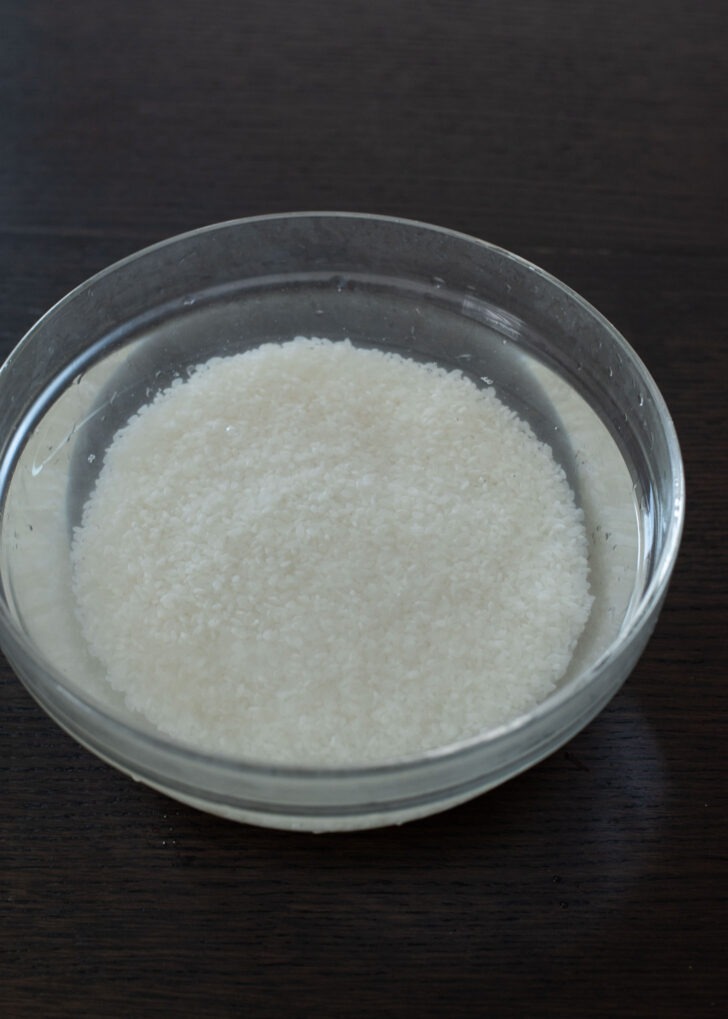
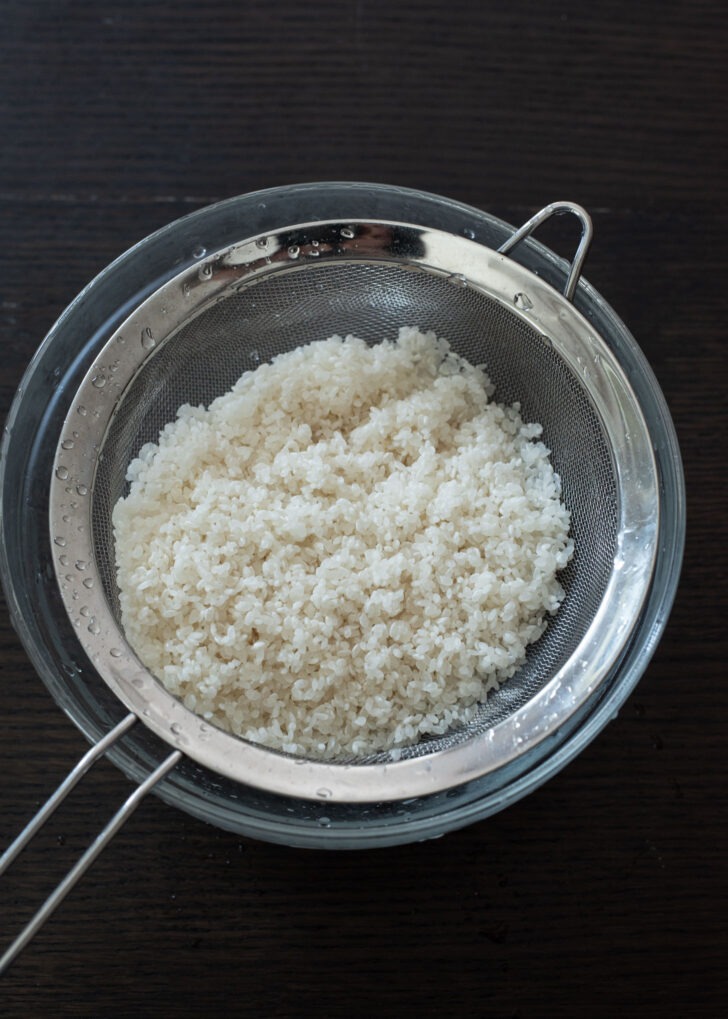
Add enough tap water to the bowl to submerge all the rice. Swirl a couple of times and discard the water immediately to remove the milky water.
Wash the rice thoroughly with your fingers in a swirling motion for about 10 seconds. This allows the rice grains to rub against each other and remove any impurities from the milky water.
Pour more tap water, swirl around, and discard the cloudy water. It is important to repeat the rinsing 4-5 times until the water runs almost clear.
Measuring the amount of water
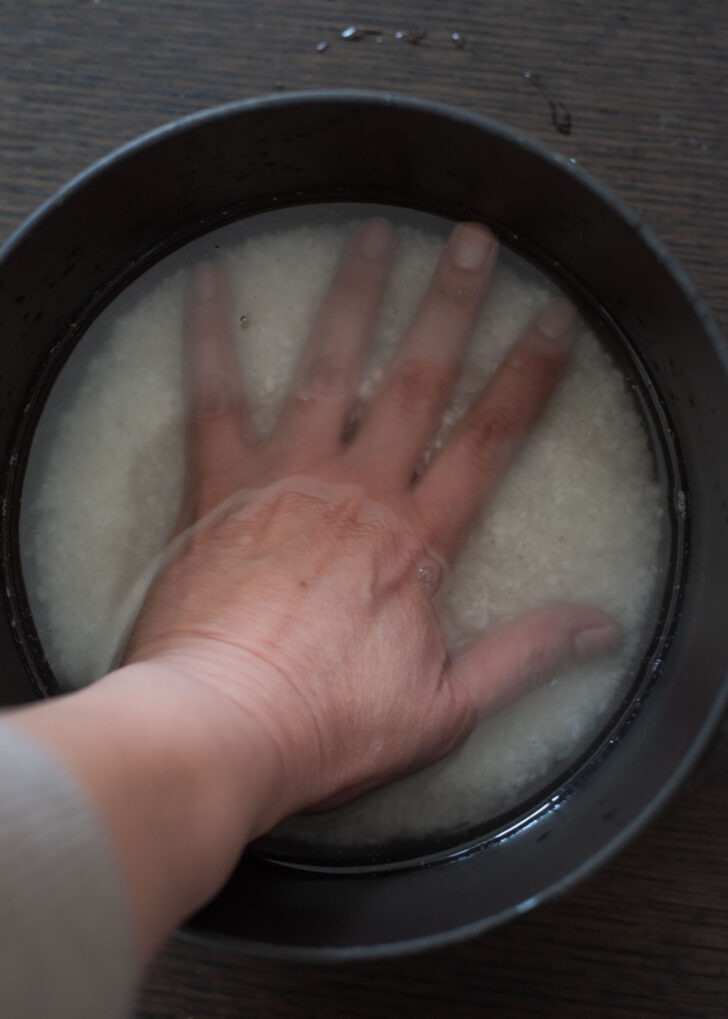
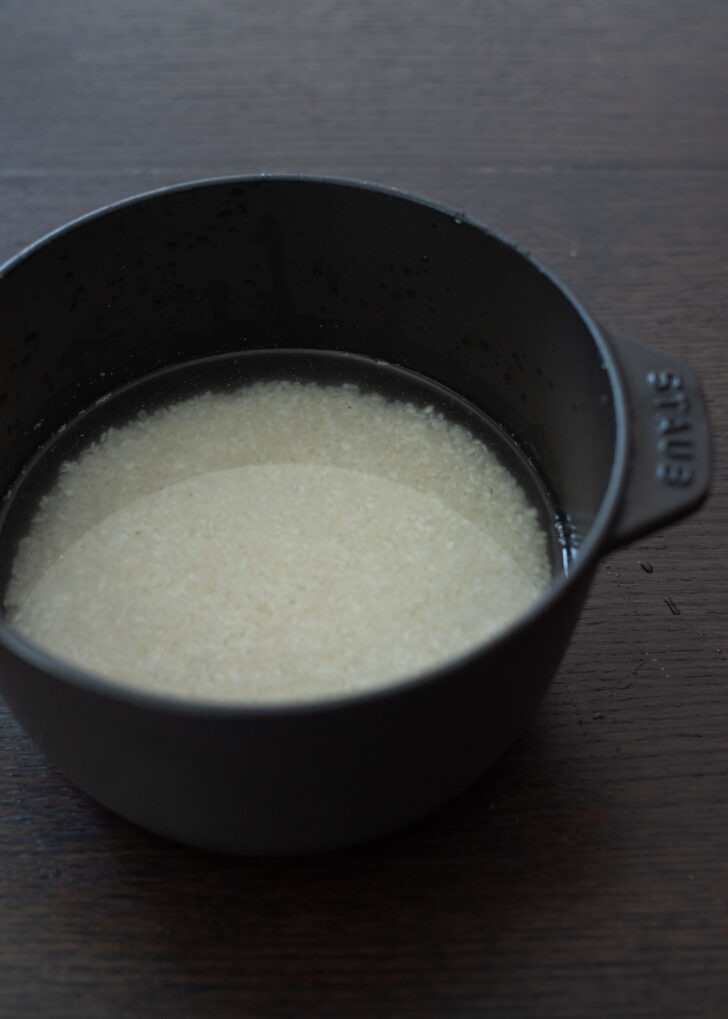
Drain the rice in a fine mesh strainer and shake off any excess water. Place the drained rice in a heavy-bottomed pot like a Dutch oven or cast iron pot. Measure the water according to the desired rice-to-water ratio. Let it soak for 10 minutes.
Knuckle method:
Koreans often use a traditional method, known as the “knuckle method,” to measure water for cooking rice.
To use this method, you place your hand on top of the rice to make it flat. Then, pour water over the rice until the water level reaches near your knuckles.
While this method may not sound scientific or logical, it is a common practice among many Korean housewives. However, it may not be as accurate for men with larger hands.
Cooking the rice
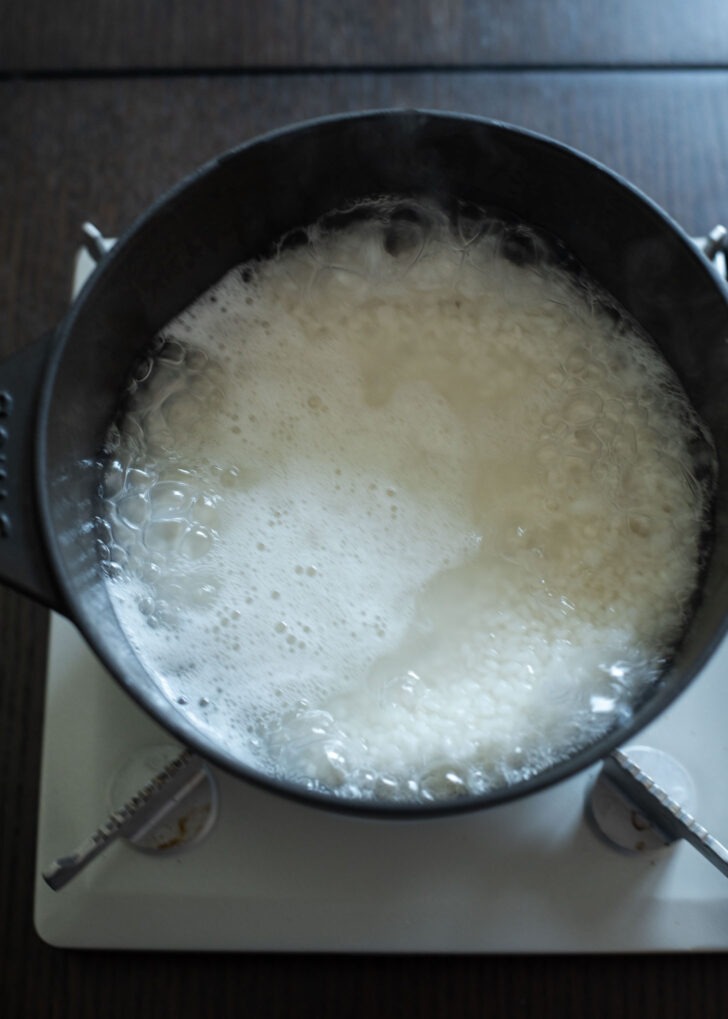
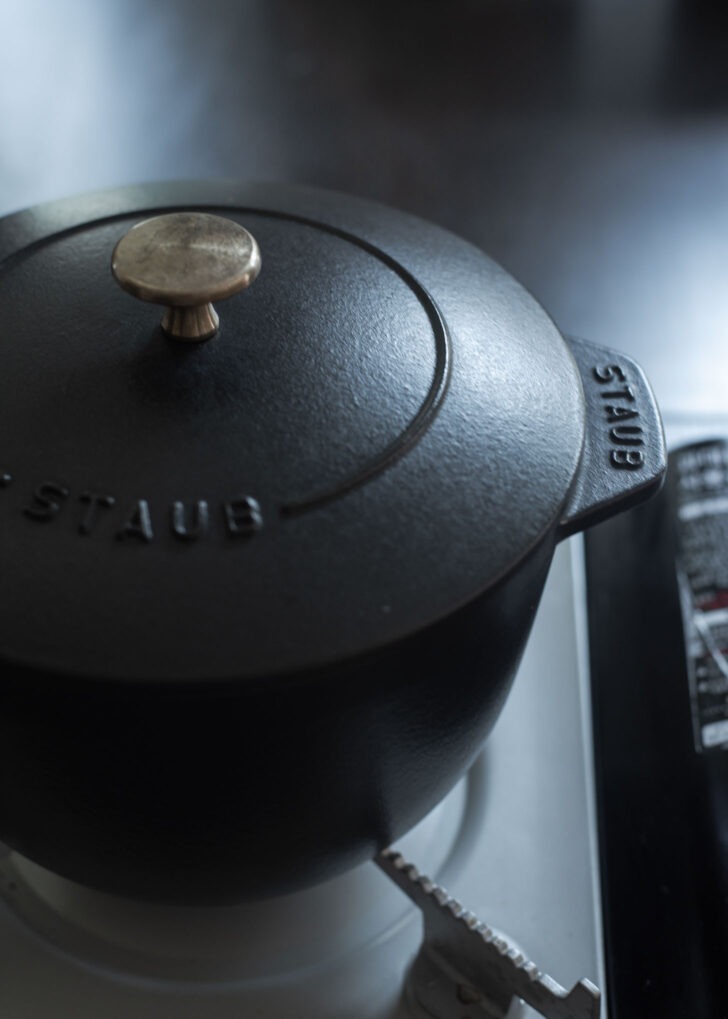
Cover the pot with the lid and bring it to a boil over high heat. Try not to open the lid completely since it can affect the texture of the rice. Peeking slightly to see if any steam is coming out should be fine. Once the water is boiling, reduce the heat to low and simmer for 10-12 minutes.
Turn off the heat and let the rice sit for 5-10 minutes to allow it to steam and absorb any remaining moisture.

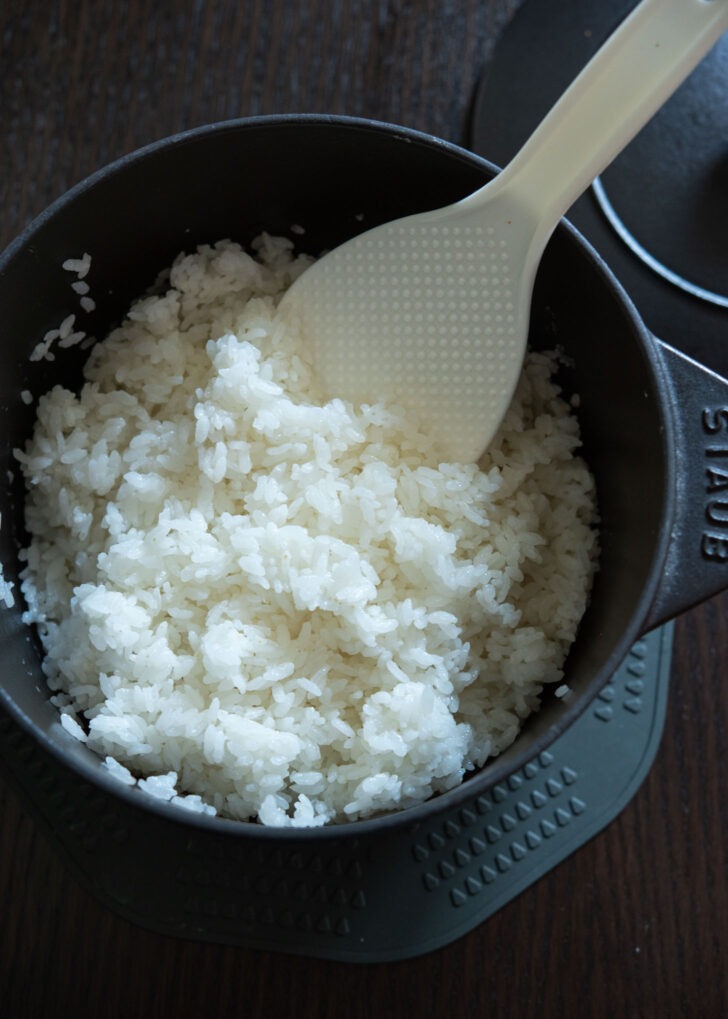
Finally, fluff the rice with a rice paddle or fork before serving.
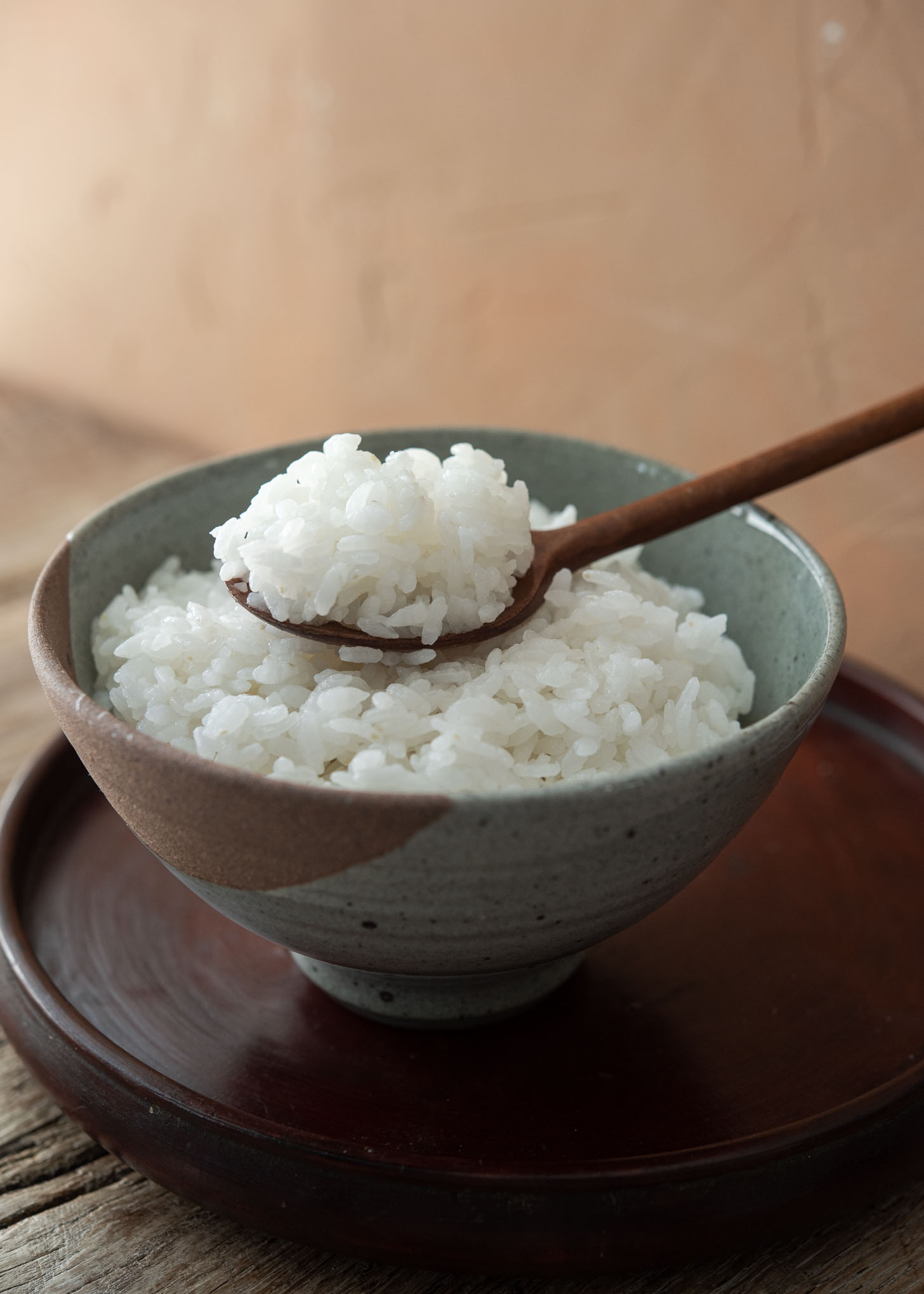
Adding Fresh Beans or Peas to Rice
Adding freshly shelled beans or peas to Korean rice is a great way to add flavor and nutrition to the dish.
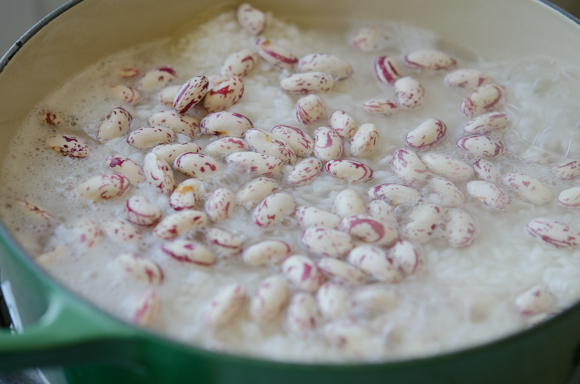

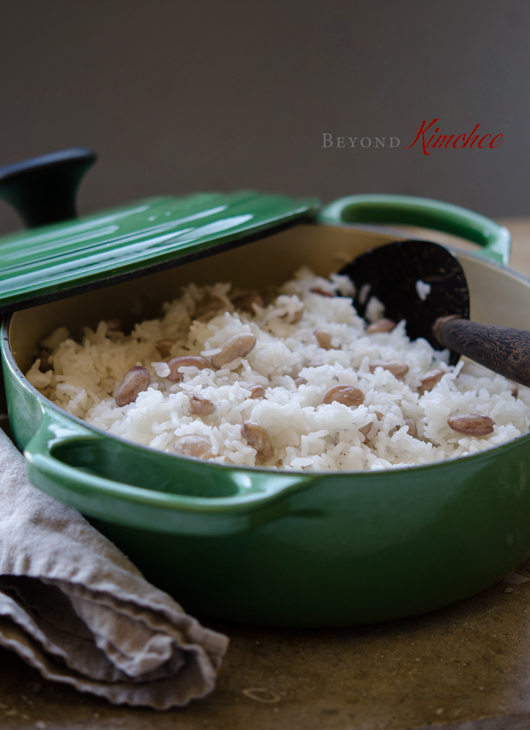
To do this, when the water reaches to boil, add the beans or peas (use 1/4 amount of rice), and lower the heat to a simmer. Cover and cook for 10 minutes. After the resting period is over, fluff the rice to incorporate the beans or peas into the rice.
Storing and Reheating Tip
If you have leftover rice or want to store it for an extended period, freezing is the best option. You can use freezer-safe containers or freezer-safe zip bags.
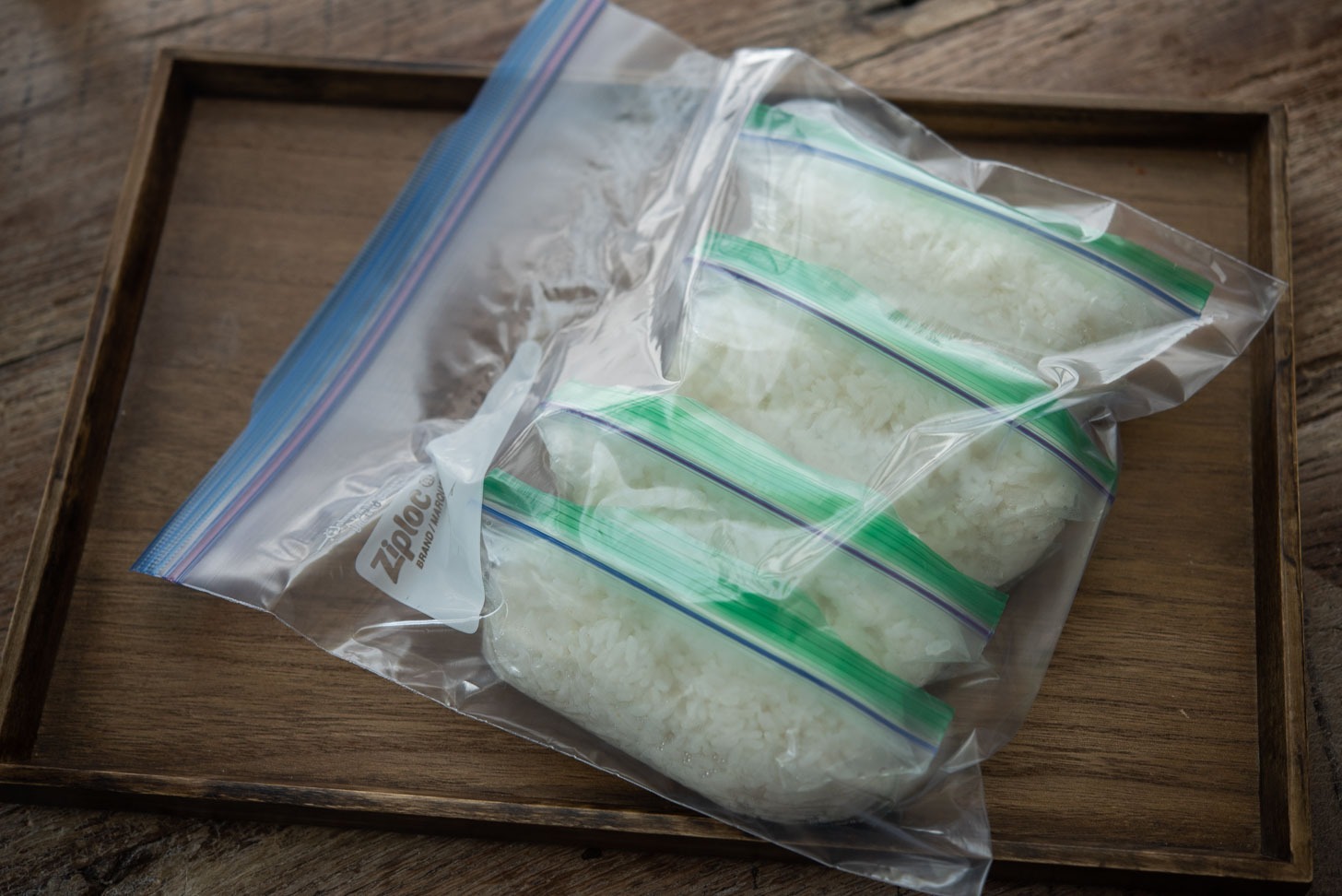
Portion the rice into individual serving sizes and store them in separate bags before placing them together in a larger zip bag. This way, you can easily take out the desired amount of rice without having to defrost the entire container.
To reheat the frozen rice, simply take it out of the bags and transfer it to a microwave-safe dish. Microwave on high for 2 to 2 1/2 minutes, and you’ll enjoy rice that tastes as if it was freshly cooked.
Delicious Dishes to Serve with Korean Rice
Here are a few flavorful dishes that you can pair with rice to create a satisfying and well-rounded meal.
- Beef Bulgogi: A classic Korean dish made with thin slices of marinated beef that are grilled or pan-fried.
- Galbi-jjim (Braised Korean Beef Ribs): A hearty and flavorful dish made with beef short ribs that are slow-cooked in a savory broth.
- Doenjang Jjigae (Korean Soybean Stew): A comforting and healthy stew made with fermented soybean paste, tofu, and various vegetables.
- Kimchi Jjigae (Kimchi Stew): A spicy and tangy stew made with fermented cabbage, pork, tofu, and other ingredients.
- Spicy Korean Pork Stir-Fry: A flavorful and spicy dish made with thinly sliced pork, vegetables, and a spicy sauce.
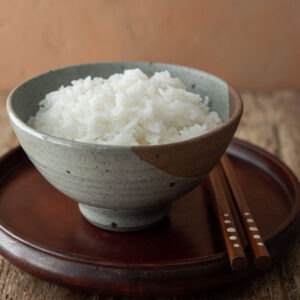
How to Cook Korean Rice on The Stove
Recipe Video
Ingredients
- 2 cup (480 ml) short grain or medium grain rice
- 2 1/2 cup (600 ml) water
Equipment
Instructions
- Add enough tap water to the bowl to submerge all the rice. Swirl a couple of times and discard the water immediately to remove the milky water. Wash the rice thoroughly with your fingers in a swirling motion for about 10 seconds. This allows the rice grains to rub against each other and remove any impurities from the milky water.
- Pour more tap water, swirl around, and discard the cloudy water. Repeat the rinsing 4-5 times until the water runs almost clear.
- Drain the rice in a fine mesh strainer and shake off any excess water. Put the drained rice into a heavy-bottomed pot, such as a Dutch oven or cast iron pot, and measure water according to the desired rice-to-water ratio. Let it soak for 10 minutes.
- Cover the pot with the lid and bring it to a boil over high heat. Try not to open the lid completely since it can affect the texture of the rice. Peeking slightly to see if any steam is coming out should be fine. Once the water is boiling, reduce the heat to low and simmer for 10-12 minutes.
- Turn off the heat and let the rice sit for 5-10 minutes to allow it to steam and absorb any remaining moisture. Fluff the rice with a rice paddle or fork before serving.
Notes
- The basic ratio for cooking short grain white rice is 1:1.25 (rice to water). However, this ratio can vary depending on personal preference and the age of the rice. Newly harvested rice may require less water, around 1:1 ratio, while rice that has been stored for over a year may require more water, around 1:1.5 ratio. If you prefer a softer and stickier texture, you may need to increase the amount of water accordingly.
- If you are using a regular pot, you may need to open the lid slightly while boiling. Without a heavy lid, the water can overflow as it boils, and to compensate for the steam escape, you will need to add slightly more water than the recipe suggests.
- You can add fresh beans or peas: To do this, when the water reaches to boil, add the beans or peas (use 1/4 amount of rice), and lower the heat to a simmer. Cover and cook for 10 minutes. After the resting period is over, fluff the rice to incorporate the beans or peas into the rice.

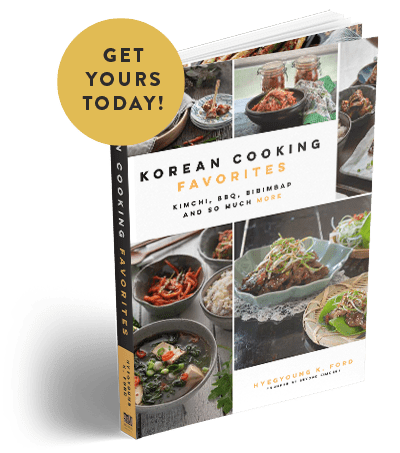
Thank you for sharing your story about your grandmother. She sounds lovely and I can just picture her hanbok making yummy rice in the old fashion stove. I’m glad you still have lovely memories of her. Thank you for sharing!
Beautiful memory. Thank you for sharing it!!!
Helllllo meeee again. Loving your blog. Do you have a fool proofed recipe to making egg fried rice..? Apologies if it is on the site but have not been able to locate it, if it is.
Hi Helen
Is this the recipe that you are looking for?
https://www.beyondkimchee.com/express-egg-rice/
I’m not a fan of these beans (my mum loves it though!), but I think I will try this because you make it look so good! Thanks for sharing such a heart warming story of your grandma. Your reci[pes are the best because they come with stories x
(lucylovestoeat.com)
I made this for my husband and me last night and it was AMAZING and so easy. Thanks for the great, easy recipe! Five stars!!!
That is just wonderful, Sarah! I am glad that both you and your husband liked it.
I’ve never tried this type of beans, but I can imagine this rice will go well with all the korean dishes!
I was surprised when I learned Koreans cooked rice with their beans when I was watching a Kdrama. However, I would imagine it would taste good! Vietnamese people have dessert rice with beans as well. 🙂
Rice mixed with various types of beans is common in Korea. It brings more texture and flavor to the plain rice.
This is such an essential recipe with a heartwarming memory to go with it 🙂
I add beans to cooked rice all the time, but never cook the beans with the rice. Fun idea! Thanks for this.
Yes, it makes rice more exciting and tasty. Thanks John!
Thanks for sharing your beautiful story and recipe with us!
Thanks for reading, Steph. Hope you get to try cooking rice on the stove!
Thank you for such a heartwarming and lovely memory of your grandma! I’ve never cooked beans with rice but they look so colourful and yummy that I’m tempted to try. I love the soft blue-green (celadon?) glaze and shape of your rice bowl btw.
Thanks Jeanne. The soft blue green rice bowl is from Korea. I love it, too!